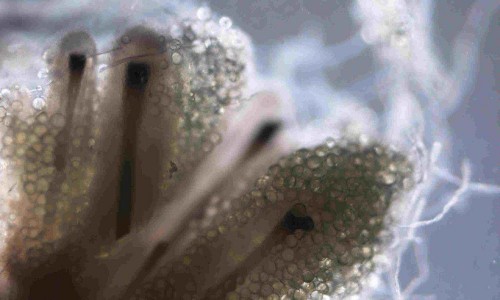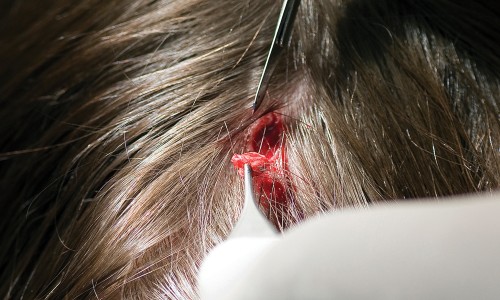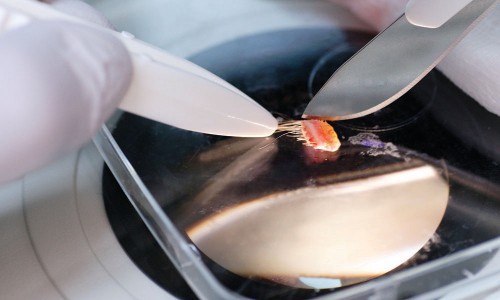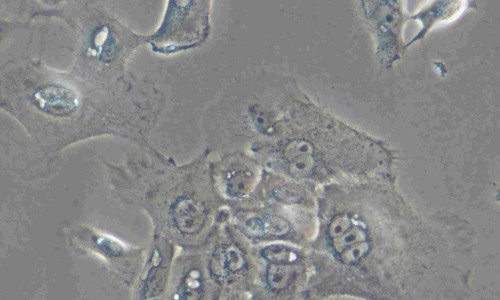Polona Tratnik interviewed by Alan N. Shapiro
I interviewed the Slovenian artist and media culture-cultural studies professor Polona Tratnik in Ljubljana, Slovenia.
Alan N. Shapiro: You use the phrase “engagements in culture” at your website to describe some of what you do. Is this idea a way of connecting together your two careers as an artist and as a professor of media culture and cultural studies (with an emphasis on theory)?
Polona Tratnik: The Ministry of Culture is an institution that covers a certain field – and this is a field of culture. When I am working in the field of scientific research or teaching at the university, I don’t consider myself as being much involved in culture. Being culturally engaged would mean that you enter the wider social field and communicate the issues with a wider public. In calls for proposals for scientific research there is a special category — social achievements, and this means also achievements in culture. It demonstrates the social importance of your work. Working as an artist or as a curator, which I also do, or organizing roundtables, even symposia, is a cultural engagement, designed for a wider public.
AS: Is there a connection between your two careers?
PT: Yes, they are very interconnected. My interest in art drew me towards deepening my knowledge about certain questions through reading texts and discussing the issues theoretically. To say it in a very condensed way and perhaps too simply: working as a scientific researcher is about deepening the discourse, and working as an artist is about communicating issues on a sensual level, establishing aesthetic situations for a wider public.
AS: Your artworks appear to be about a dialogue or collaboration between art and science. You work on artistic strategies connected to fields like immunology, tissue engineering, biotechnology, medicine, and aesthetic surgery. But aren’t you asking scientists to change? The implications of these art projects seem to be to bring science closer to everyday life, and to social and political concerns. Are you asking scientists to practice science in a different way?
PT: A very important field of science that I am engaged in is philosophy: political philosophy, phenomenology, philosophy of biology, philosophy of regenerative medicine. I bring philosophy and biotechnology into the sphere of art. I collaborate with people in the life sciences. Traditionally, in modernity, philosophy and the life sciences have been divided from each other. I want to see philosophy get more involved in biological issues, which means getting truly involved in biology and bringing these two knowledges closer.
AS: This reminds me of what I said to you in Milan last December at the NABA conference. There should be a new turn in philosophy, beyond the emphasis on deconstruction and postmodernism, bringing philosophy closer to biology and the life sciences, which also means re-connecting with existentialism and phenomenology. And not with Leninism, as Slavoj Zizek advocates. Reinvigorate philosophy existentially, to make it into a useful dialogue partner for the life sciences.
PT: I have worked deeply on Hegel. He was very involved with mathematics and physics and applied biology to his philosophical system. Deleuze and Guattari were very involved with physics as well, and they applied geology and biology to their philosophical system. These thinkers were not hermetically closed into philosophy in their philosophizing. What I learned from Hegel is that philosophy must be in tune with the thinking of the world that is significant for a particular age, or for our age, let us say. It cannot be separated from other social fields. This also gives to philosophy an important social place. I do not understand those thinkers who would want to protect philosophy as an autonomous sphere in the sense of not being engaged with the context. Philosophy means comprehending the world, reflecting on the issues that are relevant in a certain time and space, a certain context. And natural scientists are already practicing philosophy in what they do, within their projects they need to evaluate philosophical or sociological dimensions of their work, but they don’t operate with a proper knowledge for dealing with these issues. We have to argue for the proper inclusion of philosophy in the social sciences fields, and also in the fields of natural sciences. Often exactly the contrary is taking place, philosophy has been expelled even from its own domains. In the Slovenian National Medical Ethics Committee there are 15 scientists, but not even one of them is a philosopher. But ethics is a branch of philosophy.
AS: In your artwork “Hair In Vitro” (2010–11), and some of your other artworks, you take a part or an element of the human body, for example, hair or cell tissues, and give them conditions of life independent of the human body. Hair, for example, is provided with conditions to live on its own. Your intention seems to be to decrease the separation between the human body and the outside of the body. What are you trying to demonstrate with this artistic practice?
PT: In thinking about our cultural practice of having plants in the home, or animals in the home, in an aquarium, I started to reflect about what would it mean to have another human being in that position. It is about the presence. We strive to get somebody else’s presence. We keep others in our memories, but we also already have objects given to us by someone who we love, or we feel the presence of another person in our apartment through objects they have left here, or we feel their prior habitation of a space. We also project ourselves into these memories or traces of the other. I was thinking about all these dimensions. So I thought about taking it one step further. With tissue engineering, you could have a piece of someone else on a table, next to your bed. And this element of the other person is still alive.
For the “Hair” (2005) and “Hair In Vitro” (2010–11) projects, I’ve used hair. I like hair since it ensures the presence of someone else. It invokes strong affections. And it also has strong cultural connotations. I started working with skin tissue, skin cells and then with micro-organisms and hair. I was reflecting upon the question, where are the boundaries of our bodies. In the project “37°C” (2001), I was cultivating skin cells and tissues, with the help of the Blood Transfusion Centre of Slovenia, because this center has been very good in the research and development of skin tissues for the purpose of transplantations. I found it intriguing that the experience which we have of skin in our everyday life, and what we encounter in the laboratories, is something totally different. We experience skin as part of a whole complex system of the human body. But in the laboratory, you deal with living cells which you cannot see with the naked eye. You multiply them in greater quantities and you don’t get skin. You don’t have a layer of dead cells, you don’t have pigment cells, you don’t have veins and capillaries, any blood. It’s just cells in a Petri dish. Something is growing, a part of another person, you know it, but you cannot experience it directly, you cannot experience the life of it, the growing of the cells. Can this be brought back into the context or environment of everyday life? How can this be related back to skin? If we don’t do this, then there is no difference between human cells and frog cells, it all becomes a mere experimental material, a complete decontextualization, the work of the bio-tissue laboratory becoming totally removed from the human condition and human experience.
AS: Is the skin the border of our bodies, of our human existence?
PT: I don’t think that the skin is the cortex or the boundary of ourselves. It is only one layer of ourselves. It is inhabited with thousands of micro-organisms. They live with us and collaborate in building our immune system. The microbes are not a foreign species. They co-compose our bodies, the complexity of our organism. I believe we should change the notion of the biological identity of ourselves being subsumed in the DNA of one organism, we should comprehend the whole complexity of the organisms co-composing this living system. Additionally, we are also constantly coming into contact with other people and environments where we make an exchange of microbes. We share. We touch. This is touching. We are other people. We co-compose the shared tissue. Thus speaking about the boundaries of bodies and transparent stable biological identities becomes very unreliable from this perspective. Maurice Merleau-Ponty was reflecting about the immersion of the subject into the tissue of the world. I am conducting a similar reflection about the immersion of an open organism into the biological tissue of the world.
AS: So you were inspired by Merleau-Ponty, an important existentialist-phenomenological philosopher, and you developed some of his ideas further to give philosophical understanding, support, and critique to the life sciences in the contemporary situation. Are you philosophizing against Aristotle’s separation of spirit and matter, and Descartes’ separation of soul and body, the reduction of the body to an automaton? Is your project to embed philosophy into the life sciences, bio-technology, and medicine?
PT: Yes, I agree with that. Another set of issues that I am working on which is also a project against Cartesianism is related to regenerative medicine. There are different branches of bio-technology. I am interested in biotechnology concerning the human being, specifically in the shift from the genetic paradigm to a paradigm of tissue engineering. The genetic paradigm was very much marked by computer culture, it was built upon understanding life as a software which can get manipulated as a program. There was the idea of designing babies, of programming certain qualities into a person. I think that this is a myth. The features of a personality are much too complex, and I don’t think that we will acquire the power and knowledge to do this. Although the possibility of altering the chances of getting certain illnesses is certainly real. The newer paradigm of tissue engineering or regenerative medicine is more haptic and tactile. It is more modest, less ambitious. It does not pretend to the epistemological position of the external objective observer knowing everything about the human subject, as in genetic engineering. One works with a physical material and there is the goal of healing the body. This is a very important political technology. How can we improve the qualities of our bodies, preserve youthfulness, and extend the active phase of life? It supports the life-affirmative politics within the contemporary society.
As you suggest, it is a project that opposes the Cartesian notion of the body as composed of mechanical parts, the body as a machine. This is unfortunately still the model of the majority of Western medicine. With the idea of the body as self-regenerative, it is not like a car that gets used up during the course of a lifetime. The body is, on the contrary, constantly working to get you younger. On every level of your body, a process is constantly going on: the process of the division of the stem cells. Experimental research has shown that mistakes also take place, even potentially fatal mistakes from which tumors or cancer can develop. Vitalization and mortification are closely related processes. They somehow proceed together, but they could perhaps be separated. Michel Foucault analyzed the role anatomo-clinical medicine has for bio-power, and I aim to analyze the role biotechnology has gained for bio-power. Life is an interplay, resisting the threats of death. Regenerative medicine tries to fortify qualities which the body already has to resist the processes of mortification.
AS: Do you think that the idea of technological extensions of the body which was very popular in the 1990s, for example, in cyborg theory and in the performances of the Australian artist Stelarc, is now obsolete?
PT: I would say that the idea of extensions of the body imagined with hardware technologies is still supporting the notion of the mechanical body. But Stelarc’s project “Ear on Arm,” where he aimed to surgically attach a tissue-engineered ear to his left arm, interests me, and it is very contemporary. Not only because of tissue engineering, for which the project actually demonstrated the failure to produce a sustainable tissue-engineered organ, but he introduced an original notion of an extended body which we can all share. Stelarc’s biological body is being extended in the sensorial sense, thus enabling other people to plug themselves into it. It is about networking the haptic, sensorial body. However, if we consider tissue engineering, we are at a very basic stage of the possibilities of body manipulations. We are not yet able to generate complex tissues in vitro. What we are able to do so far is only a simple technology, the multiplication of cells. We cannot yet speak about tissues in the case of artificially cultivated skin cells. The cells would have to be formed together in a certain specific way to perform a specific task. Science is today far from cultivating an artificial muscle, which would be functional in the way that the one in the body is. We have a concept of a project in this direction. It truly means working in a transdisciplinary mode.
AS: One of your artworks is called “In Vitro and Transspecies.” What is, for you, the meaning of transspecies?
PT: It means a species that is a biological hybrid composed from two different species. We were working on the idea of a transspecies, made of a mouse and a human being. This was related to the “Hair” project. When experimenting with human living material, there are usually three phases of experimental research: the first phase is in vitro, working with living cells in an artificial, highly controlled environment, which resembles the living organism. We worked in vitro with hair cells, which are very demanding to work with, because of the fragility and complexity of the system and the high possibility of contamination (because hair comes from an external environment). The second phase would be to do pre-clinical experimentation work with animals. The third phase would be clinical experimention work with humans subjects, in this case the transplantation of hair. You can work with so-called nude mice whose immune system has been disabled by genetic engineering, therefore they can accept biological material from another species which means they are designed for the experimentations that result in building transspecies.
I was never enthusiastic about working with animals. I don’t want to instrumentalize other living beings. But we did stem cell research in relation to the research of hair. There was a striking idea that came to my mind in this regard. Nude mice are an example of living beings designed by humans for bare instrumental purposes. In fact, nobody cares about them, we don’t really consider them living beings. I don’t like this. By inserting the human stem cells into them one could build the immune system of the mouse. I like this because it means to reverse the logic of who is helping whom. Instrumentalize the human being to work for the good of the mouse. So if you do this, you are working on building a transspecies, you don’t only get a nude mouse with human tissue, but a mouse with a human immune system, you truly get a mouse-human hybrid.
AS: You say that you want art to be trans-disciplinary. What is the difference between interdisciplinary and transdisciplinary?
PT: Interdisciplinary means that you have several disciplines which are willing to collaborate. Transdisciplinary means that these disciplines really traverse into one another. Art is maybe the first field where this could be immanently accomplished. Although it also has its own qualities and in a certain sense it stays autonomous. But if it transmits methods, knowledge, and technologies, say, from the field of bio-technology, and it also behaves as a philosophy-in-action, then it becomes a transdisciplinary field. In a project like “Hair In Vitro,” you can no longer divide the fields. But I would also like to put stress on the fact that it is not really possible to “train” someone as an artist, to discipline someone as an artist, so art will never be a discipline. In a way, the same is true for philosophy.
AS: I think that it is necessary to have a classification system of knowledge. But I don’t think that the classification system that we have now is appropriate to the world and the society that we are now living in. It is based on separation, on assumptions of binary oppositions like social and individual, mind and body, natural and artificial, nature and culture, living and non-living, psychology and physiology, form and content, media and message, critical and affirmative, real and fake, reality and fiction, etc.
PT: We have the tradition of these disciplines, and it’s really about disciplining. You have certain cultures of, let’s say, laboratory work, ethnographic research; you have certain methods of how to do research which are linked to a certain discipline. Besides, there are scientific paradigms that rule each circle of scientists. This was well shown by Thomas Kuhn in The Structure of Scientific Revolutions. The disciplinarity of the disciplines is not so much related to the subject-matter or issues, but to the customary methodologies. This is really what distinguishes sociology and philosophy, for example. The disciplines follow the research canons and methodologies, which in turn dictate the scientific origins, aims, and points of view, etc. And this actually represents an intellectual enclosing. Additionally, we have social fields with their specific struggles as Pierre Bourdieu has asserted in his work, therefore one cannot ignore the fact that you have to deal with who is in power in each discipline and in each country. Additionally, there are cultural differences within the disciplines that originate from different traditions and cultures, for example philosophy in Slovenia is not the same thing as philosophy in the United States or philosophy in Germany.
AS: We don’t even have real dialogue among the different national traditions within the history of ideas. How do we bring together French deconstructionist philosophy, German critical theory, the Italian reflection on new media art and virtual reality, Canadian media theory, American pragmatism and existentialism, British rationalism and logical empiricism, and the great Russian literature of novelists like Dostoyevsky and Tolstoy? France and Germany, or France and England, can hardly even engage in mutually respectful dialogue. A very powerful German thinker who didn’t like Foucault caused the delay of the publication of Foucault’s works in German by many years. If we cannot even have meaningful dialogue among ourselves, how will we in the West have an encounter with Buddhist and Hinduist spirituality in a way that is epistemologically authentic?
PT: Yes, you are right. The ideas are always translated, adapted to culture, read in a specific way in different situations. We cannot strive for the true or the pure idea; there is a constant slippage taking place – but also an enrichment – in the process of transposing the ideas and traditions. And, regarding the ‘intellectual culture’, such as it might be called, there is now a hard pressure in the West – at least I can speak about Europe – for the ‘usefulness’ of science. And this is killing the humanities.
AS: You have been a guest professor in Mexico, China, and Finland. And now you will be teaching at the University of California. What do these international experiences mean to you?
PT: In China, I was teaching cultural studies. There the perception of culture is completely different from the perception of culture in Europe. Their idea of national culture or of communities diverges from ours. The cultural understanding of the concepts that one speaks about while teaching, like dominant cultures or sub-cultures, is not the same. You start to learn how they hear what you are saying, and it is different from how European students hear what you are saying. Of course, cultural studies in China are being developed in an authentic sense, they are becoming something much different than what they were when the program started in the U.K. Teaching in China was an enriching experience. In Finland, at the University for Art and Design Helsinki Taik, they have developed a very strong tradition of ‘artistic usefulness’, of design, which is now being developed in the direction of building environments, complex experiential situations, designed for people working in the economy, for example. I believe they are one of the best in the world in these practices. In Slovenia, such an understanding of art is very much alien. Our cultural experiences brought us to understanding art rather as a critical practice. I am sure that my half-year in California will give me new perspectives.



